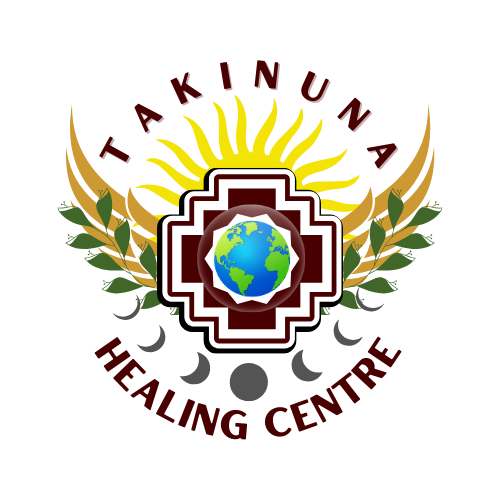Medicinal Plants of the Peruvian Amazon
The medicinal plants of the Peruvian Amazon embody a profound expression of ancestral knowledge among Amazonian peoples. Rooted deeply in their culture, traditional medicine employ a diverse range of plant species to treat illnesses and syndromes, safeguarding ancient healing practices for future generations. The understanding of the medicinal properties of plants in the Peruvian Amazon stems from observation, experience, and a deep comprehension of the environment. This wisdom, transmitted across generations and enriched by cultural integration, underpins traditional healing practices in the region.
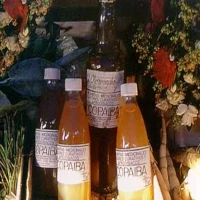
Essentials of Using Medicinal Plants
For the effective use of medicinal plants from the Peruvian Amazon, it’s crucial to have a comprehensive understanding of species, preparation methods, and appropriate dosages. It’s also vital to observe necessary precautions, as many plant compounds interact synergistically, often requiring the combination of two or more species to achieve beneficial effects.
Medicinal Plants
For treatments, we employ the potent properties of over 100 master medicinal plants, drawing from a rich heritage of ancient shamanic techniques to address a wide range of illnesses. These practices, passed down through generations by our native Amazonian healer ancestors, form the cornerstone of our approach.
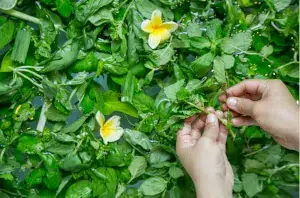
Central to our healing philosophy is a deep trust in the innate wisdom of nature and the profound knowledge embedded within these medicinal plants. We understand that each plant carries centuries-old wisdom, supporting a holistic approach that enhances the health and well-being of participants during ayahuasca retreats.

Plant Medicine Treatment
Dietary Preparation
Plant medicine places great importance on dietary modifications. Specific restrictions on salt, sugar, oil, and other substances help cleanse the digestive system and establish a foundation for optimal healing.
Internal Cleansing
In addition to Ayahuasca’s potent purgative effects, traditional practices involve using other plant preparations such as Oje, Sauco, Piñon Blanco, Tobacco, Ajos Sacha, and Dragon’s blood. These aid in deeper internal cleansing and blood purification.
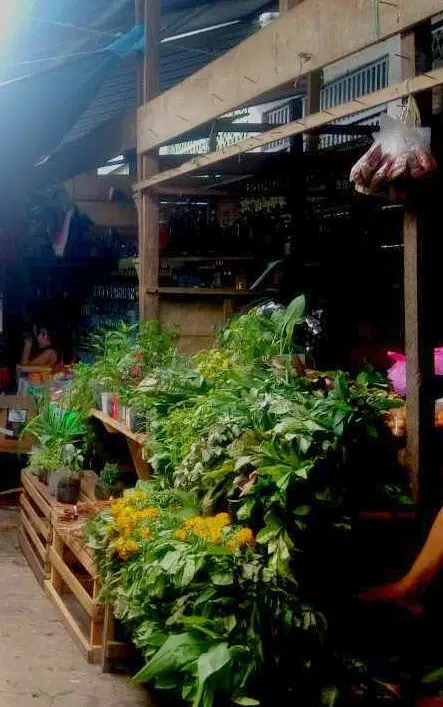
Herbal Steam Baths
Herbal steam baths, often overlooked, offer a unique external cleansing experience infused with medicinal plants. They promote the release of toxins and the absorption of therapeutic properties.
Herbal Plant Baths
Immersing oneself in water infused with specific plants allows for dual physical purification and aromatic therapy, fostering a sense of emotional and energetic balance.

Medicinal Plants We Use
- Ruda: Renowned for its capacity to purify negative energies, promoting harmony and inner peace.
- Rosa sisa: Largely used by Master Healers for its protective and aura-cleansing qualities. In Quechua, it translates to “yellow rose,” symbolizing energy, optimism, and friendship.
- Sharamasho: Valued for its aromatic essence and protective qualities, it shields against negative energies and promotes familial harmony.
- Lancetilla: Valued for its healing properties, provides refreshment and stress relief while clearing residual energies from the past.
- Amor seco: Recognized for its protective powers in matters of love and heartbreak healing. It also promots strong bonds in relationships.
- Canelilla: Recognized as a potent guardian of prosperity, it purifies the energetic body to attract abundance.
- Shimipanpana: Celebrated for its transformative and liberating effects, it helps in releasing repressed emotions and invigorates the spirit.
- Sacha Albahaca: Used for its healing properties that purify dense energies, and promotes liberation and harmony within the family environment.
- Lengua de Perro: Employed by Shamans for its transformative qualities, assisting in the release of heartbreak-induced afflictions.
- Motelillo: Valued for its calming effects, it helps release anger and tension between couples, promoting an energetic environment of peace and love.
- Mint: Largely known for its refreshing attributes, it rejuvenates both the inner and outer body.
- Cariñito: A powerful guardian of love, its aromatic healing properties support maintaining relationships united in a serene atmosphere of peace and love.
Properties of Medicinal Plants
- Camalonga: Esteemed for its potent arcanum (protective properties), Camalonga cleanses the energetic body and shields the aura from negative energies and entities, promoting purity and spiritual fortification.
- Ajos Sacha: Esteemed among shamanic healers for its profound cleansing abilities and capacity to rebalance energy, Ajos sacha is also utilized for detoxification purposes (purging).
- Piñón Colorado: Known for its therapeutic benefits, Piñón colorado is employed by shamans for treating rheumatism through the use of its leaves in poultices. It also aids in purging negative energies from the body.
- Achiote Colorado: Esteemed for its potent healing properties against skin infections, Achiote Colorado is also known for its role in clearing residual energies, and providing spiritual protection during ayahuasca ceremonies.
- Gallinazo Panga: Celebrated for its potent healing properties, Gallinazo Panga cleanses the aura of negative energies. Its strong aroma envelops the body, providing protection against negative intentions.
- Patiquina negra: Acknowledged as a protective plant, Partiquina Negra protects the energetic body, promoting security and clarity during ceremonies.
- Amasisa Blanca: Highly valued for its remarkable healing properties, Amasisa Blanca helps releasing stored negative emotions and organizing thoughts and feelings effectively.
- Abuta
- Achiote
- Ajo Sacha
- Amasisa
- Ayahuasca
- Bolsa Mullaca
- Cacao
- Caña Brava
- Capirona
- Casho
- Cedro
- Clavo Huasca
- Cocona
- Copaiba
- Chambira
- Chiric Sanando
- Chuchuhuasi
- Guayusa
- Guisador
- Hierba Santa
- Huacapu
- Huasaí
- Huingo
- Huito
- Icoja
- Jergon Sacha
Abuta
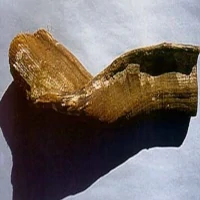
Motelo sanango, trompetero sacha Abuta grandifolia (Martius) • Uses-Bark: – Diabetes: Maceration of 20 g of scraped bark in one liter of water. Half a glass is taken after meals for 30 days. – Dysmenorrhea: Infusion of 30 g in one liter of boiled water; one cup is taken three times a day.
Achiote
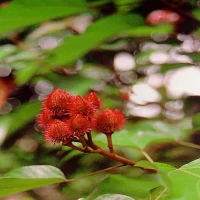
Shambu Bixa orellana L. Bixaceae (Dicotiledónea) Uses-Leaves: – Skin infections: Soak 9 to 12 leaves in one liter of water overnight and then apply them to the affected area. – Vaginal antiseptic and healing: Rub 9 to 12 leaves overnight in one liter of water. The liquid is used for vaginal washes. – Hepatitis: Take a decoction of the leaf buds.
AjoSacha

Sacha ajo (Lam.) Gentry Mansoa alliacea Uses-Root: – Rheumatism: Soak five roots in a bottle with brandy for two days. Take a small cup on an empty stomach and then bathe. Leaves: Rheumatism: Decoction of three male leaves and three female leaves plus four leaves of red annatto; bathe with the liquid, and use the leaves to make poultices on the affected area.
Amasisa
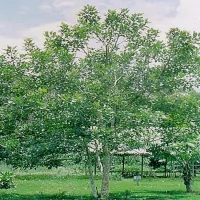
Gallito Erythrina fusea Loureiro Fabaceae (Dicotiledónea) Uses-Bark: – Ulcers: Grated bark is applied to the ulcer. – Hemorrhoids: The liquid obtained from a decoction of the bark is used in sitz baths. – Antiseptic and fungal infections: The decoction is used for washes on the affected area. Leaves:- Urinary infections: Infusion of 250 g of leaves is allowed to cool.
Ayahuasca

Family: MALPIGHIACEAE-Scientific Name: Banisteriopsis caapi (Spruce ex Griseb) Morton.Ayahuasca is a psychoactive plant mixture that has been used for centuries by indigenous communities in the Amazon basin for spiritual and shamanic purposes.
BolsaMullaca
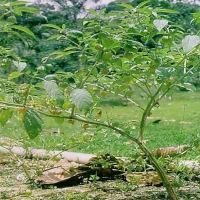
Family: SOLANACEAE-Scientific Name: Physalis angulata Medicinal use: Acaricide: Apply crushed green fruits to the affected area.Diuretic: Take the infusion of the leaves. Abscesses: Apply roasted leaves with a little salt in the form of poultices.
Cacao
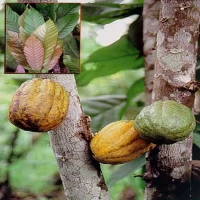
Family: STERCULIACEAE-Scientific Name: Theobroma cacao Medicinal use-Sedative: Take the infusion of the leaves. Cardiotonic: Take the infusion of the leaves. Dysentery: Take the decoction of the bark. Muscular pains: Apply cocoa butter directly to the affected area.
CañaBrava
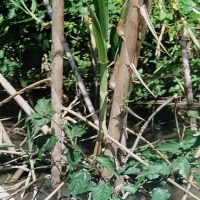
Caña isana Gynerium sagittatum (Aubl). Beauv. Poaceae (Monocotiledónea) Uses-Leaves:- Skin infections: The ashes of leaves and stems are mixed with palm oil, and a ointment is prepared to be applied to irritated areas of the skin. Anemia: An infusion is prepared with its leaves and stems and is taken three times a day.
Capirona
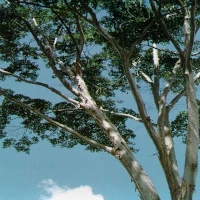
Family: RUBIACEAE Scientific Name: Calycophyllum Medicinal use Healing agent: Apply the scraped bark as a poultice on the affected area. Hemostatic: Apply the scraped bark as a poultice on the affected area. Wrinkles: Apply the sap to areas with wrinkles.
Casho
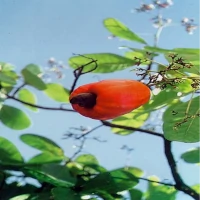
Cashew, Cashew Nut Anacardium occidentale L. Anacardiaceae (Dicotyledon) Uses-Bark Vaginal Antiseptic: A warm decoction of 100 grams of bark is used for vaginal washes at night.Young Leaves Anti-diarrheal: The infusion of the young shoots and the juice of the fruit are consumed. To prepare the infusion, take four buds (terminal shoots) of cashew; crush them along with an equal amount of guava buds and boil them for 10 minutes in one liter of water.
Cedro
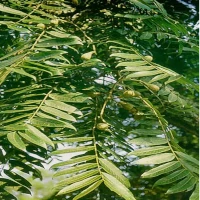
Family: MELIACEAE-Scientific name: Cedrela odorata L. Medicinal use-Diarrhea: Take the decoction of the bark. Toothache: Apply the resin in the cavity of the tooth. Spasms: Consume the infusion of the flowers. Skin wounds: Take the decoction of the bark and wash the wounds.Leishmaniasis or uta: Take the decoction of the bark and wash the wounds.
ClavoHuasca
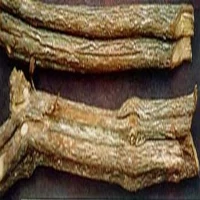
Family: BIGNONIACEAE-Scientific Name: Tynnanthus panurensis (Bur.) Sandw. Uses Bark: – Tonic, colds: macerate 2.00 g of the product in a liter of brandy. Take a small cup in the mornings for 15 days. Stems and roots:- Frigidity: Take a small cup of the alcoholic maceration (brandy) twice a day (morning and night).
Cocona
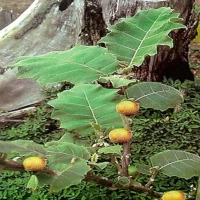
Solanun sessiliforum Dunal Solanaceae (Dicotiledónea) • Uses Leaves:- Burns: Crush the raw leaves, and the juice is applied directly to the wound. Fruits:- Skin infections: Rub the juice of the fruits on the infected areas affected by “rasca-rasca” and “caracha.”
Copaiba

Copaifera paupera (Herzog) Dwyer Fabaceae (Dicotiledónea) Uses-Oil: – Wounds and inflammations: Place a few drops of oil on the affected area.- Scabies: The oil from the fruit, either in its natural form or as a decoction, is applied to the affected area.- Throat conditions: Apply touches twice a day with a mixture of one tablespoon of honey and three drops of copaiba oil. – Ulcers: To treat stomach ulcers, take five drops of oil, diluted in a tablespoon of warm water, on an empty stomach, for seven days.
Chambira
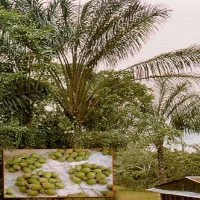
Astrocaryum chambira Burret Arecaceae (Monocotiledónea) • Uses Leaves:- Rheumatism: Steam baths are applied to the entire body of the patient by boiling several leaves in 20 liters of water. The patient should stay in bed and avoid contact with cold water. Present Compounds Proteins, lipids, carbohydrates, fibers, ashes, calcium, phosphorus, iron, retinol, vitamins A, B, B2, B5, C.
ChiricSanando
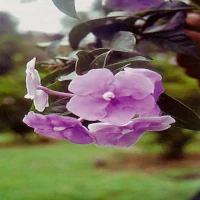
Chuchuhuasha Brunfelsia grandiflora D. don. ssp. Shulttessi Plow. Uses Root:- Rheumatism: Seven crushed roots are macerated with five liters of water; the resulting liquid is given to the patient to drink on an empty stomach; then, they should bathe and rest. In alcoholic maceration, two roots in one liter of brandy for two days; take a small cup three times a day.
Chuchuhuasi
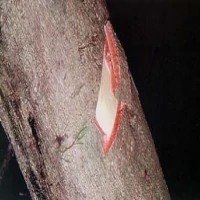
Chuchuasi, chuchuasha Maytenus macrocarpa (R. & P.) Briq.Celestraceae (Dicotiledónea) Uses Root: – Rheumatism: In alcoholic maceration, put 250 g of dried roots, especially those that emerge from the ground, crushed after removing the superficial part, in a bottle with brandy. Take every morning on an empty stomach. This preparation can also be mixed with honey in equal parts. Take a small cup in the mornings and evenings for one month.
Guayusa
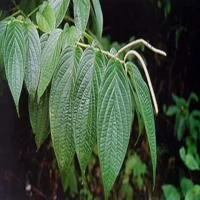
Family: PIPERACEAE Scientific name: Piper callosum Medicinal use Energetic: The decoction of 4 leaves is given to lazy individuals, especially children, during the new moon, in the mornings, and on an empty stomach, for 4 days. Hemostatic: Apply the crushed leaves.
Guisador
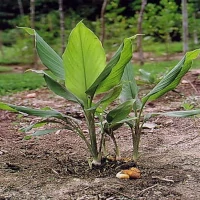
Palillo Curcuma longa L. Zingiberaceae (Dicotiledónea•Uses Rhizomes: – Malaria or malaria: Grate 1 kg of rhizomes, squeeze the juice into a container, let it settle overnight. Take two tablespoons in the morning and evening for 15 days.- Hepatitis: The decoction of the rhizomes is taken as a regular beverage.
HierbaSanta
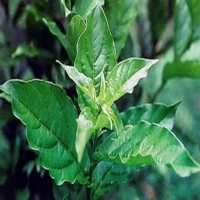
Scientific Name: Cestrum hediondunim Dun Medicinal use Sedative: Take the decoction of the leaves. Emmenagogue: Take the infusion of the leaves. Bronchitis: Take the decoction of the leaves. Dandruff: Apply the plant infusion as a wash. Dermatitis: Apply the aqueous maceration of the tender leaves as washes.
Huacapu
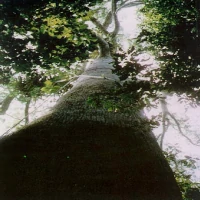
Minquartia guianensis Aublet Olaceae (Dicotiledónea)• Uses Bark: Hepatitis, malaria: Prepare a decoction with 50 g of the bark in one liter of water. The liquid is taken 4 times a day. Antirheumatic: 200 g of the bark is macerated in one liter of cane brandy; wild honey is added. Take a small cup on an empty stomach for a month.
Huasai
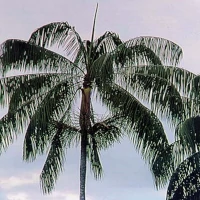
Family: ARECACEAE Scientific Name: Euterpe oleracea Medicinal use Liver and kidney conditions: Take the decoction of the roots. Baldness: Apply the oil from the fruits to the scalp. Diabetes: Take the decoction of the roots combined with those of huicungo and ungurahui.
Huingo
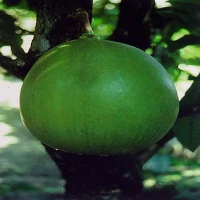
Tutumo, pate Crescentia cujete L. Bignoniaceae (Dicotiledónea)• Uses Leaves: Intestinal parasitosis: The decoction of four leaves is consumed hot on an empty stomach. Fruit: Fevers: Take the decoction of the fruit pulp. Bronchitis: Extract the juice from green fruits; cook directly over the fire, add lemon and wild honey; take one tablespoon three times a day for a week.
Huito
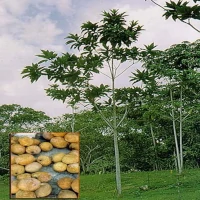
Genipa americana L. Rubiaceae (Dicotiledónea)• Uses Bark: Hemorrhages, pellagra: Take a cup of the decoction of 50 g of bark in one liter of water three times a day. Ripe fruits: Anemia, bronchial conditions, digestive issues: Squeeze the fruit to obtain the juice, which is consumed at any time of the day. A syrup is also prepared by boiling the fruits in sugared water until it reaches a syrupy consistency.
Icoja
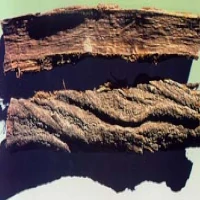
Unonopsis floribunda Diels Annonaceae (Dicotiledónea)• Uses Bark: Antirheumatic, antidiarrheal: The bark is macerated in brandy, approximately 200 g in one liter. Take a small cup in the mornings. Wounds and skin infections: Apply the ash to the affected area. Pellagra: Wash the affected area with a concentrated decoction of the bark.
JergonSacha
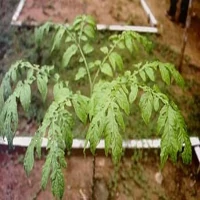
Sacha jergon, Hierba del jergon Dracontium loretense Krause Araceae (Monocotiledónea) • Uses Corms: Snakebite: The crushed potato or bulb is wrapped in a bijao or banana leaf (“patarashca”) and applied to the bite area. Grated, it is applied directly to the wound; and taken diluted in a cup of cold boiled water. Hernia: A decoction of the corms (potato or bulb) and petioles, boiled until obtaining a very thick liquid. Apply directly to the affected area.
